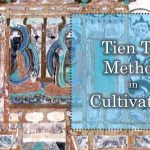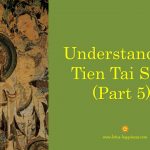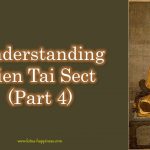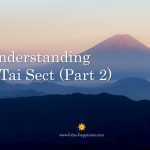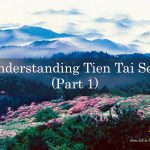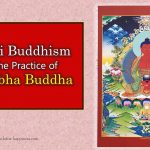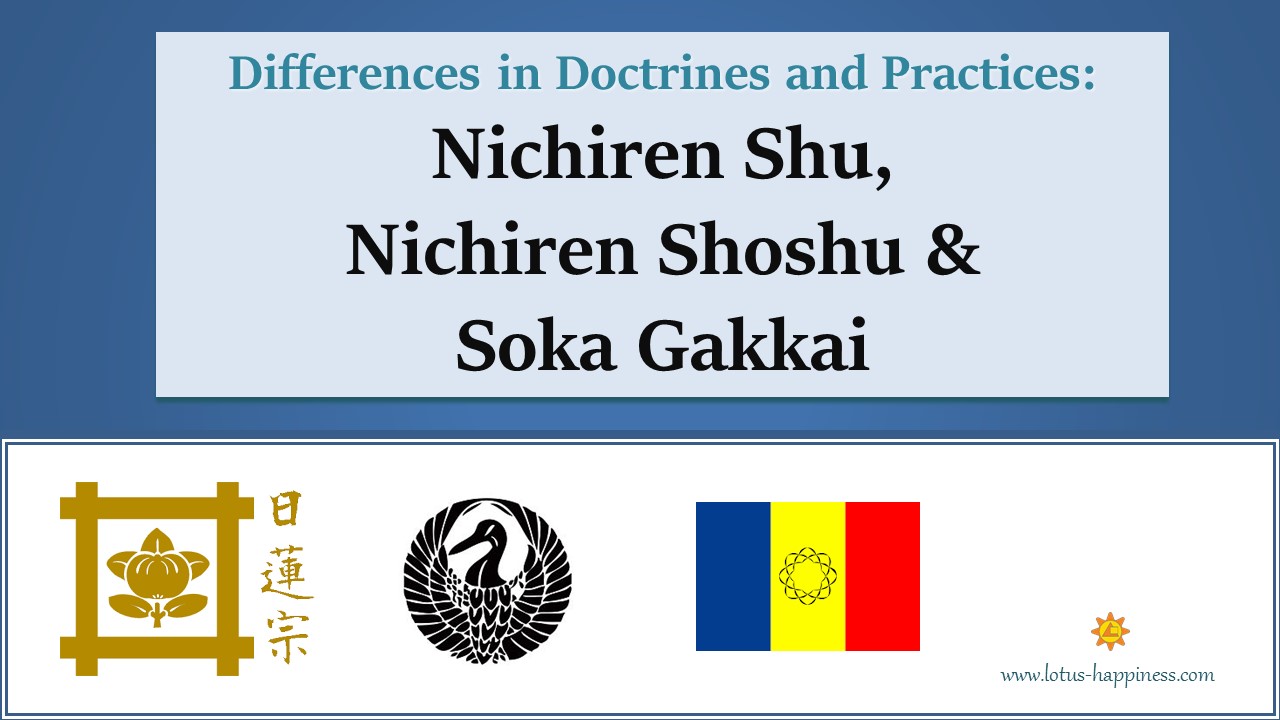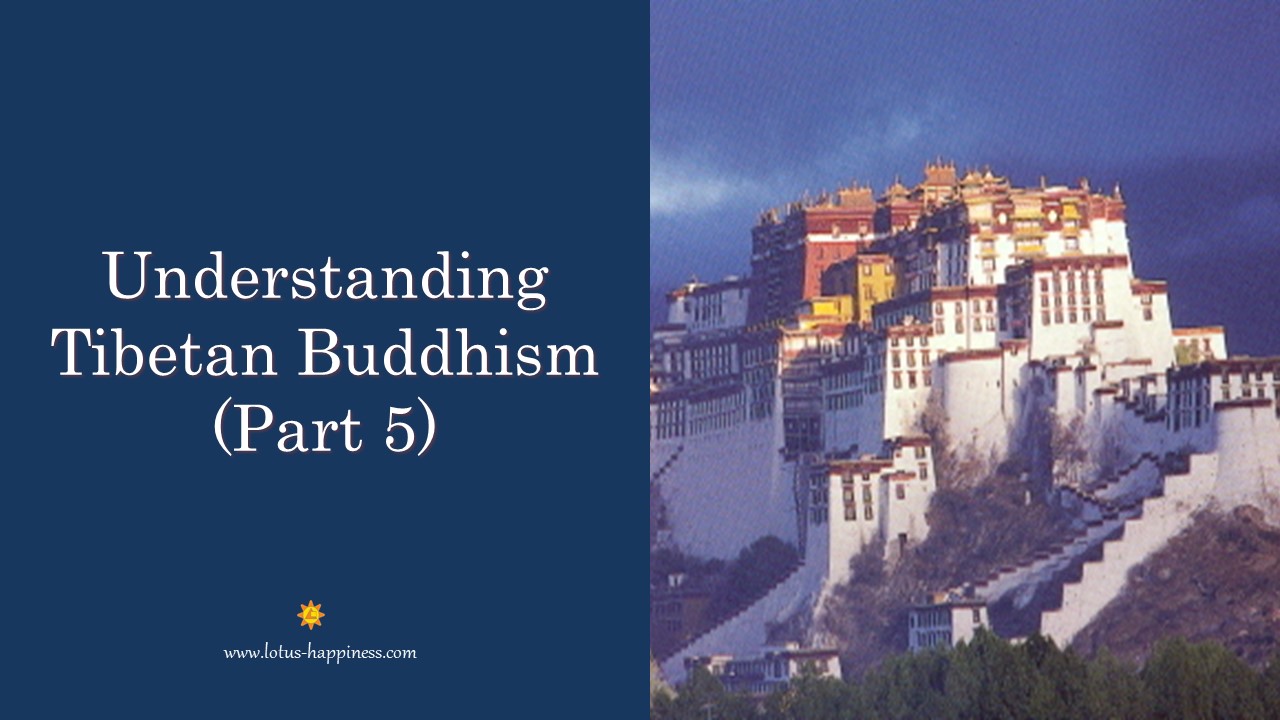Understanding Tien Tai Sect (Part 3)
The Perfect Harmony of the Triple Truth [三諦圓融]
Based on the Three Universal Truths, Tien-tai believes there is a true state or noumenon, which can be realized through its manifested phenomena. There is no noumenon besides phenomena, and phenomenon itself is noumenon in nature. Thus the Tien-tai established The Triple Truth [三諦], or the Threefold Truth of Emptiness, Falseness and Mean, which is one of the characteristics of the Tien-tai doctrines providing the structure for its interpretation of the Buddha Dharma.
The Truth of Emptiness [空諦]
Sometimes, it is called the Truth of Voidness or known as Sunyata in Sanskrit. All things and phenomena are impermanent and have no independent reality of their own. Thus, they are said to be empty. It signifies that no Dharma can exist by itself alone, but is causally produced and maintained in dependence of other conditions.
The Truth of Falseness [假諦]
In Sanskrit, it is known as Samvrtisatya. Though Dharmas are empty, they do have temporary or provisional existence as perceived by the senses. Falseness means that things and phenomena do have an empirical and concrete existence, but they are not permanent and absolute, so it is known as the conventional existence.
The Truth of Mean [中諦]
Sometimes it is called the Truth of Middle Path, or Middle Way, or just Middle. In Sanskrit, it is known as Madyama. Mean should not be taken as lying between the other two, but as identical with the two. Mean means that things and phenomena are both empty and existent, and that the inter-penetration between the ‘Li’ [理]and ‘Shih’ [事]. While the particular thing or phenomenon (so-called ‘Shih’) remains distinct, they are identical on the basis of their emptiness, thus all things and phenomena are parts of one single unity of Law (so-called ‘Li’).
Mean is the true and very state of Emptiness and Falseness. It is the synthesis of emptiness and temporary existence, of universality and particularity. The Triple Truth must not be treated separately because they are perpetually united and in harmony. These three truths emphasize the idea of totality and mutual identification, i.e. the whole and its part are identical. In this respect, the whole cosmos is present in the tip of hair, and one thought is the three thousands worlds. It is regarded as the inter-penetrations of all Dharmas.
This concept is summarized by Chih-I in his writing:
The perfect Triple Truth means that it is not only the Middle Path, which completely includes the Buddha-Dharma, but also the real and the mundane (truths). This Triple Truth is perfectly integrated: one-in-three and three-in-one.
The Absolute Mind
According to the Tien-tai doctrine, the Absolute Mind embraces the entire universe in its entity. It is equivalent to the True Suchness [真如], or the Womb of the Tathagata [如來藏], the Buddha Nature [佛性], the Dharmadhatu [法界], etc.
In its substance, the Absolute Mind is everywhere the same and undifferentiated: in its form and functions, it is diverse and differentiated, as the phenomenal manifestations integrated in the Absolute Mind. Therefore, in its synthetic totality, the Absolute Mind is fully and perfectly present in all things, whether sentient or insentient, and in all phenomena, whether the universe or a mote of dust. With respect to the Buddha Nature, the possibility of enlightenment in Buddhahood for a being is utterly non-exclusive.
It is original and ordinary that the Absolute Mind is the repository of all potentialities, both pure and impure. Its pure nature is responsible for the attributes of the Buddha, while its impure nature is responsible for other beings in the phenomenal world.
The Three Delusions [三惑]
The Three Delusions are (1) Delusion on View and Thought (2) Delusion on ‘Chen-sha’, and (3) Delusion on Fundamental Ignorance.
(1) Delusion on View and Thought [見思惑] — As we are deluded in principle, what we view is false. As we are deluded in phenomena, what we think is wrong. It refers to the delusion of ordinary people who do not understand the emptiness as the reality of universe and life, and attach to the Dharmas. Thus, we are afflicted due to lack of understanding of the Truth of Emptiness.
(2) Delusion on ‘Chen-sha’ or Minute Dust-like Delusion [塵沙惑] — ‘Chen-sha’ is translated as ‘dust’ and ‘sand’. It means we are deluded by numerous phenomena, as many as and as minute as sand and dust, which are temporary in existence, or so-called ‘false’. Thus, we are afflicted due to lack of understanding of the Truth of Falsehood.
(3) Delusion on Fundamental Ignorance [無明惑] — As we are deluded by the Fundamental Ignorance, we do not understand the Truth of Mean, and thus are not enlightened.In order to break the Three Delusions, we have to practice the Threefold Contemplations as below.
The Threefold Contemplation in One Mind
According to the Triple Truth and the Three Delusions, Tien-tai sect sets forth the doctrine of the Threefold Contemplation in One Mind, which breaks the Three Delusions and attains the Three Wisdoms. The details are as follows:
1. Contemplation of Emptiness — to break the Delusion on Views and Thoughts in order to attain Sarvajna (i.e. the Wisdom of Omniscience or the Wisdom of All Things) [一切智]. It refers to the wisdom attained by the Two Vehicles, i.e. Sravakas and Pretykabuddha, as they understand all the characteristics of Dharmas, which is Emptiness in reality.
2. Contemplation of Falsehood — to break the Delusion of ‘Chen-sha’ in order to attain the Wisdom of the Seeds of Way or the Wisdom of the Path [道種智]. It is the wisdom that adopts all means to save all sentient beings, as it can differentiate all the Dharmas leading to Buddhahood.
3. Contemplation of the Mean — to break the Delusion of Ignorance in order to attain the Wisdom of the Seeds of Omniscience or the Universal Wisdom [一切種智], which thoroughly understand both the particular characteristics and the general nature of all Dharmas.
These kinds of wisdom are inherent to all beings, but are covered by the Three Delusions. Thus, they have to be revealed through the contemplative insight of mind.


